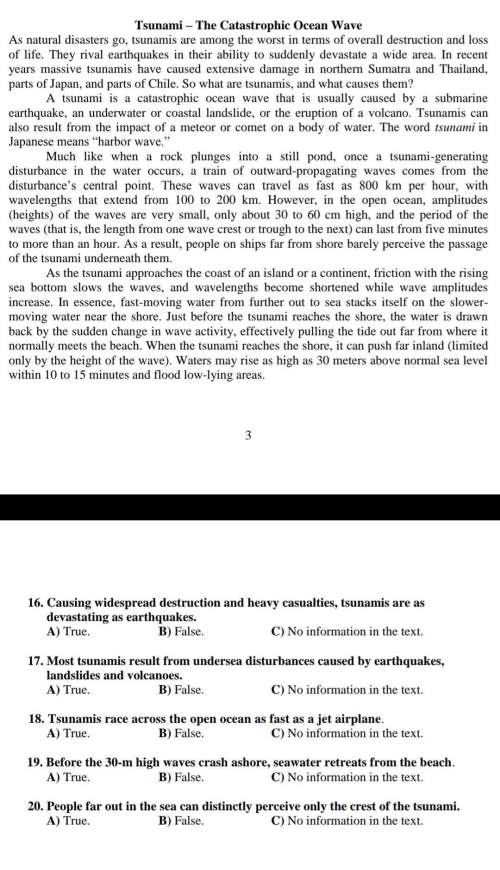In a group discussion, which of these is the best example of synthesizing
claims into a single...

English, 28.03.2020 00:53 correafelix7
In a group discussion, which of these is the best example of synthesizing
claims into a single conclusion?
A. Even though we have different reasons, we all basically agree that
Christopher Marlowe couldn't have written Shakespeare's plays.
B. People have interpreted J. D. Salinger's The Catcher in the Rye in
many different ways, some optimistically and some
pessimistically
C. When you argue that Shakespeare was anti-imperialist, you don't
really use any kind of evidence that would hold up under close
scrutiny
D. The theater scene from Dickens's Great Expectations proves to me
that the author both enjoyed the theater and had a lighthearted
attitude about it

Answers: 2
Another question on English

English, 21.06.2019 19:50
Making an inference means filling in a text's missing information using context clues; drawing a conclusion means analyzing the story's ending. true or false? true false the inference statement is true, but the conclusion statement is false. the conclusion statement is true, but the inference statement is false.
Answers: 1

English, 21.06.2019 20:10
Read the passage below and answer the question, dill was a curiosity. in the excerpt above, the word "curiosity" suggests that dill is odd dill asks a lot of questions dill is hard to understand dill is lost
Answers: 2

English, 21.06.2019 22:20
For frederick douglass’s address, “what to the slave is the fourth of july? ” (1852)1) does the speaker use fallacious reasoning or logical fallacies? use evidence from the text to support your answers. 2) how effective is the speaker’s response to counterclaims or alternate claims? use evidence from the text to support your answer
Answers: 2

English, 22.06.2019 04:40
Using the format below, write a five-paragraph letter to jem explaining how you feel about three of his decisions. explain whether or not your perception of him has changed and why. use direct quotes from the text to support why you feel the way that you do. refer to the formatting of the friendly letter below to you correctly structure your work. heading sender's address greeting (dear after skipping a line and indenting, begin your opening paragraph. this paragraph states the purpose for writing the letter. tone should be friendly and respectful. skip another line and indent to continue the body of your letter. the body is where you add examples, details, and other relevant information. this letter should contain one to two body paragraphs. skip a line and indent yet again to begin your concluding paragraph. the recipient and make any requests in this paragraph. salutation (sincerely, regards,) sender's signature
Answers: 2
You know the right answer?
Questions




History, 25.02.2020 16:40


Biology, 25.02.2020 16:40

Mathematics, 25.02.2020 16:40





Mathematics, 25.02.2020 16:41











